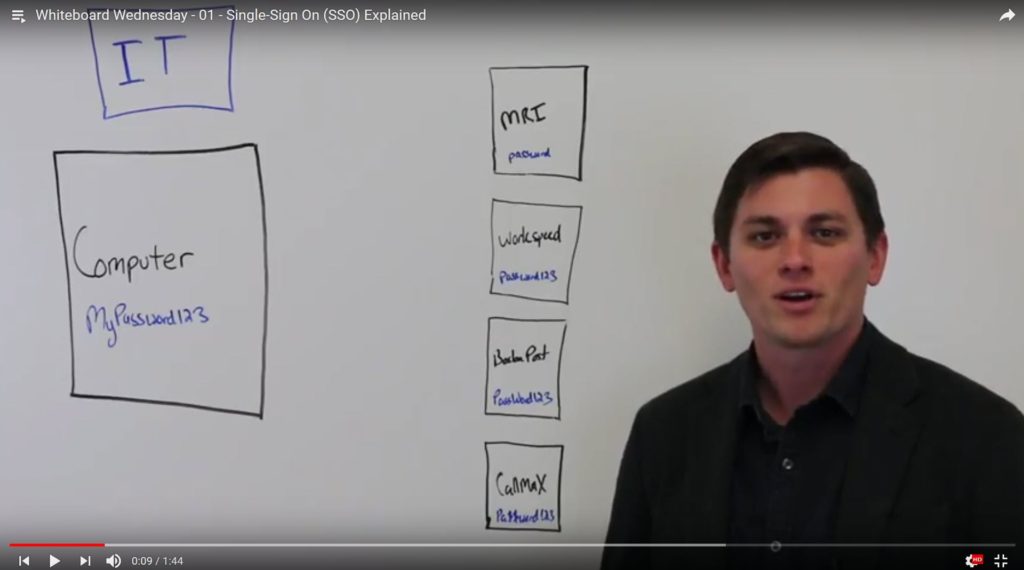MRI Software’s Product Manager of Framework, Jake Melchert, explains Single Sign On (SSO) on this week’s edition of Whiteboard Wednesday. One of the most commonly asked questions by MRI Software’s clients is “How does Single Sign On work?” Jake breaks down how the process works across multiple software applications. Join us each Wednesday for our next Whiteboard Wednesday video.
Video Transcription
Jake Melchert: Hi, everyone. I’m Jake Melchert Product Manager of framework here at MRI Software. On this week’s episode of Whiteboard Wednesday, we’re going to discuss one of the most frequently asked topics that I get. What exactly is Single Sign-On, or as we in the industry call it SSO?
To explain that topic, I’m going to walk you through a typical workday where your passwords and usernames are interacted. When you come into your office in the morning, typically you’re logging in to your computer using one set of credentials. From there, you have four applications that all usually require different sets of credentials. One might have a password that is nothing more than letters. Another one may be letters and numbers. A third one may be a combination of uppercase, lowercase letters, as well as numbers. The last one can have a complex password such as uppercase, lowercase letters, numbers, as well as some specialty characters.
What happens is, in a typical workday, you may forget the password for one of these applications. You’ll eventually be locked out of them and be required to call your IT department for them to reset the password for this application. With SSO, it exists in the middle of this and it uses the same set of credentials that you use to log in to your computer to also log you into all of your other applications. From there, it’s a little bit easier to remember your username and password.
Now, to some of you, you’re probably thinking, “Well, is it not a security concern having the same username and password for all of my applications?” It absolutely can be but a cool feature with SSO is this thing called multifactor authentication, otherwise known as MFA, and we’ll talk about that next time. That’s it for this week. Feel free to comment, like, or share.
